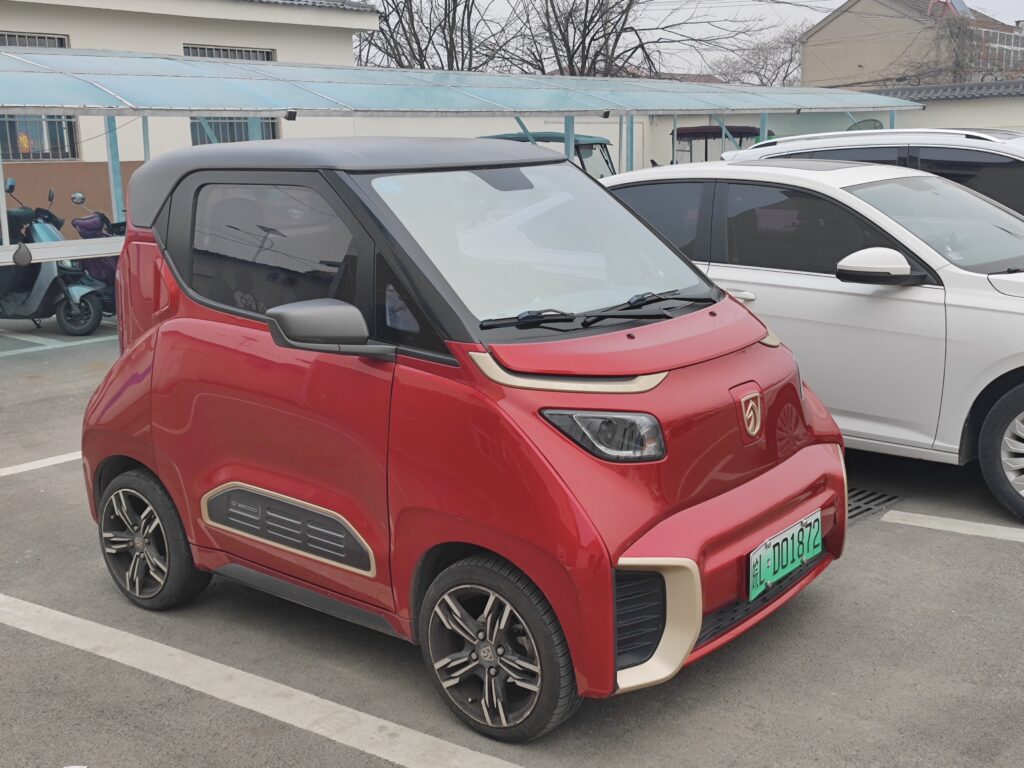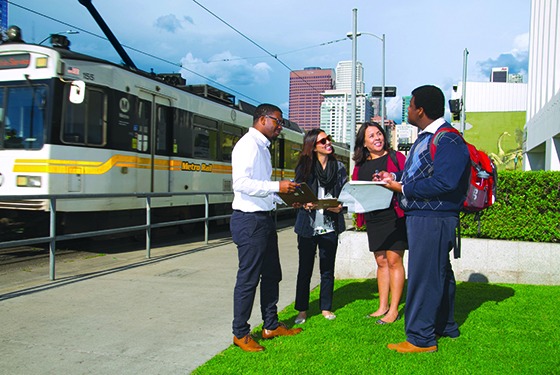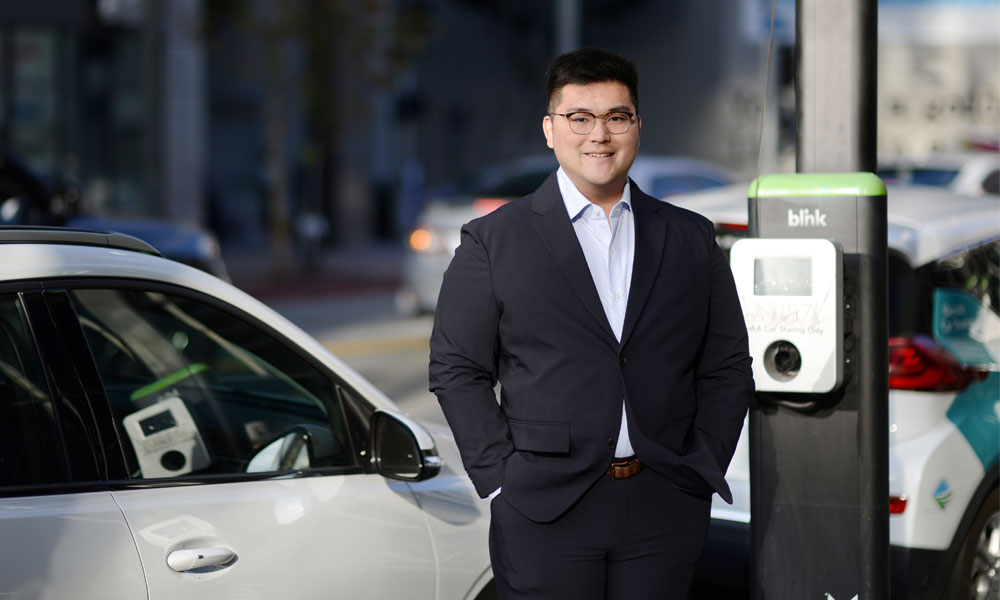The federal government’s plan to combat climate change largely hinges on phasing out gas powered vehicles – with transportation making up the largest source of U.S. climate emissions.
But even if the Biden Administration can successfully encourage automakers to build more electric vehicles (EVs), there’s still the question of whether Americans will buy them. The average purchase price for EVs was roughly $53,500 in 2023 – according to Kelley Blue Book – a price tag that’s too expensive for many consumers.
Enter Dylan Qichen Di, a Master of Urban Planning student from the USC Sol Price School of Public Policy. He has a big idea to solve the electric car cost problem: mini EVs.
The compact cars – comparable to the size of a golf cart – have lower sales prices and can be charged at home, making them an affordable option to improve EV adoption, according to a study Di conducted.
“We don’t want to have traditional gas-powered cars, but we don’t have enough cheap, accessible EV models,” Di said. “If our current technologies are not strong enough to support large-scale cars at a lower price, then maybe it’s time for us to think about smaller cars.”

Di, who grew up in China, was inspired to research the market viability of mini EVs after visiting his grandfather, who owned one. The tiny car looked cool and was practical, so he wondered why such models weren’t as popular in the U.S. as they are in East Asia and Europe.
His study concluded that mini EVs – with new models currently selling overseas for less than $20,000 – could compete well in the U.S. against used gas-powered cars. His analysis found that mini EVs have cheaper ownership costs than used gas-powered cars, thanks in part to low charging costs. Mini-EVs’ market success in other countries was associated with the low sales price and operational cost, policy incentives, home charging options, and the great flexibility they provide in short-distance commuting and parking.
Even though foreign mini-EVs have already gained success in other markets, Di is not optimistic about having European and Chinese manufacturers in the U.S. in the foreseeable future, in part because of U.S. policies favoring domestic-made EVs.
“At this point, the focus is to have U.S. manufacturers adopt small EVs as a solution or consideration for the accessibility of EVs,” Di said. “Manufacturing those mini EVs domestically in the U.S. will help to add more job opportunities.”
Di noted that the City of Pico Rivera in Los Angeles County, the client for his capstone project, is seeking investment for a micro EV tech hub. It’s only in an initial design stage, but the city is interested in luring manufactures for mini EVs that are similar to the ones he examined in his paper.
But Americans’ penchant for big vehicles and driving fast are obstacles. Safety concerns could turn off consumers, Di’s research found, even though other studies have not found evidence that mini cars perform worse in collisions than larger ones. His paper suggested that governments should consider making mini EVs meet collision test requirements to drive on roads with higher speed limits.

Master of Urban Planning
Make Cities More Just, Livable & Sustainable
USC’s MUP degree trains students to improve the quality of life for urban residents and their communities worldwide.
Find Out More“Our road design here in the U.S. is not friendly for smaller size vehicles. In the U.S., we like to build freeways with higher speeds,” Di said. “We’re trapped with traditional roadway design so it’s hard to break through limitations and make more safe and accessible roadways for all road users.”
Di’s work on exploring the potential for small electric vehicles in the U.S. is innovative and comprehensive, said Genevieve Giuliano, Distinguished Professor and the Margaret and John Ferraro Chair in Effective Local Government at the USC Price School.
“He does a great job of showing both the challenges and opportunities for expanding the adoption of EVs into lower-price markets,” she said.
Di, who will graduate during the USC Price School’s May 10 commencement, traces his interest in transportation pollution to his undergraduate studies at the University of British Columbia. At the time, Di wanted to be a meteorologist and often researched air quality. He found that pollution “hot spots” were sometimes connected to areas of traffic congestion and that better transit services were always treated as the solution. That got him interested in understanding mass transit and urban planning.
While at the USC Price School, Di landed an internship at Fehr & Peers, a transportation consulting company. Working from the firm’s Long Beach office, he analyzes traffic data to help agencies optimize the timing of traffic signals and help with road safety projects, such as Vision Zero, a national pedestrian safety initiative that includes Los Angeles
Di credits USC Price School faculty, including Giuliano and Assistant Professor Geoff Boeing, for giving him his first opportunities to participate in research. USC’s network of alumni also helped him land the job at Fehr & Peers, where he will continue to work after graduation.
“The faculty provided me a lot of insight on this industry,” Di said. “I’m very thankful.”






